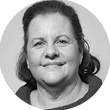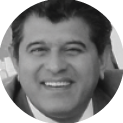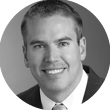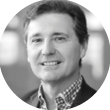
Seventeen-year-old me had it all figured out: I was going to become a lawyer. Instead, I became a journalist who focused on politics before I crossed over to medical writing. (Ironically, I was talked out of attending law school by a Delaware state Supreme Court judge.)
An unexpected twist that accompanied my change in career focus was that it led to starting businesses. My first venture into starting a business was helping to launch a magazine with an experienced group of entrepreneurs. From there, I moved on to lead my own companies that work with start-ups. It turns out that being an entrepreneur was really what I wanted to be when I grew up. Even though it has not always been easy, it has always been rewarding.
Along the way, I’ve met many ophthalmologists who have had ideas for new products. Some have successfully brought their products to market, whereas others have let their products fall by the wayside or never really tried to take their idea forward. In my experience, the main reasons for not making the leap—and it is a big one—is that it is too daunting. The balancing act seemed too tricky or the product simply wasn’t a world-beater.
So, how do you manage the triple career, the surgeon/inventor/entrepreneur? In this month’s Strategic Practice Management column, I ask some friends to share how they’re succeeding in this endeavor.
Ms. Morrill: Which came first: the surgeon, the inventor, or the entrepreneur?

Vance Thompson, MD, FACS: I don’t exactly know which came first, but I do know that being a physician and surgeon is my top priority of the three. The dreaming that never stops in me leads to ideas of inventorship, which lead to further thoughts on how to make this world a better place and how to help patients with unmet needs.

Sheraz M. Daya, MD, FACP, FACS, FRCS(Ed), FRCOphth: My career has always been in medicine and surgery, but the seeds of becoming an inventor, innovator, and entrepreneur were planted in childhood. I think the inventor really came first! As a child, I infuriated my parents by taking apart all toys that were given to me. I wanted to find out how they worked and what was inside. Eventually, I graduated to more complex devices like cameras and radios (and then struggled to put them back together).

John P. Berdahl, MD: The surgeon came first, but even before that came the doctor, and before that came the person who cares. I am meant to be a doctor. Trying to invent things and being an entrepreneur are merely the methods by which I can put to work the trust patients have in us.

H. Burkhard Dick, MD, PhD, FEBOS-CR: The surgeon came first, but with the surgical experience I acquired over the years, the inventor inside of me has grown. One becomes an expert in detecting shortcomings even in a discipline that has become so extraordinarily successful. If you encounter a problem (and particularly if you encounter it frequently), you almost automatically look for a solution.

Arthur B. Cummings, MB ChB, FCS(SA), MMed(Ophth), FRCS(Edin): Surgeon first, then entrepreneur, and inventor last. If you have not honed your ophthalmic and surgical skills, success in the competitive world of surgical eye care will be an uphill battle. In the private practice setting, you must be entrepreneurial to survive. In a refractive clinic specifically, the bar is even higher. You are competing with commercial enterprises with business skills that go beyond what we learned in medical school.
Ms. Morrill: How do these careers fit together?
Dr. Berdahl: David L. Epstein, MD, used to say that you have to allow lightning to strike and that the office is your clinical laboratory. If you can see something that doesn’t make sense and allow your mind to wrestle with it and come up with solutions, then you can identify unmet needs that will benefit your patients. In my case, the idea for the product that we’re developing came when I was scuba diving and I was thinking about how the pressure in our eyes and bodies can change under different circumstances.
Dr. Daya: I expect many ophthalmologists naturally come up with innovative ideas for technology. We are in constant contact with like-minded individuals, including researchers, developers, and manufacturers. Innovation, development, and invention are natural phenomena in ophthalmology.
Dr. Thompson: If you don’t see barriers, you can push in a stepwise manner to define and knock down the challenges one at a time.
Dr. Cummings: As time passes and you become an expert in your specialty, you recognize areas that need improvement. This is where the innovator or entrepreneur is born. Incremental innovation is the more likely route for me rather than totally disruptive innovation.
Ms. Morrill: When you have three careers, are you constantly juggling, is it a natural fit, or is it a bit of both?
Dr. Cummings: The three careers are a perfect fit, and they complete and energize one another. When you are assessing a new technology, the clinical focus is heightened to the extreme. It keeps the day job vital and exciting.
Dr. Thompson: Definitely a bit of both, but realizing the importance of people and prioritizing that are critical to balance these three well. There is only so much you can do yourself, so team building and being a part of a group of people you trust with complementary talents are crucial to your success in all three areas of commitment.
Dr. Daya: They all really knit together. The hardest part is finding enough time in the day to deal with your responsibilities. This is where the art of prioritization and delegation comes into play.
Dr. Berdahl: It is all three—constant juggling, a natural fit, and a bit of both. I know that the most important thing for me is to focus on the individual patient who is putting their trust in me. When I put my hands onto a patient’s eye, I know that this is what I am meant to be doing. The other things are icing on the cake. The challenge is to do all of this while being a good and available husband and father.
Ms. Morrill: What is the hardest aspect of these roles?
Dr. Daya: There is never enough time in the day!
Dr. Thompson: Balancing life with work is a constant journey when you love both. Listening to those you love and respect is important. When they tell you that you are allowing work to take away too much of your time with family or your personal time to balance body, mind, and spirit, it is important to listen.
Dr. Cummings: The hardest part of being an inventor is dealing with the failures along the way. But we are always dreaming of success, and that keeps us going. The hardest part of being an entrepreneur is the fact that the daily concerns and challenges around owning a clinic never go away, no matter how good your management team is. They are part of your every waking moment—and often your dreams, too. The hardest part of being a surgeon is the pressure that we put ourselves under and the incredible expectations that our patients have.
Dr. Berdahl: As a surgeon, the most difficult cases are those when someone is relying only on you to see well for the rest of their life and the surgery doesn’t go well. From the entrepreneur’s (and surgeon’s) standpoint, the hardest thing is the team aspect. The team puts so much trust in you, dedicating 50, 60, sometimes 70 hours of the best weeks of their lives to your idea—in the pursuit of helping patients—with a high-risk venture that may not work. As an inventor, the hardest aspect is not falling in love with your idea because it is possible that it could be wrong.
Dr. Dick: For all three of these roles, the hardest parts are the setbacks. In medicine, this usually means unexpected adverse events. There have been a number of innovations in eye surgery that have received regulatory approval and then are recalled because of complications.
Ms. Morrill: What is the best piece of advice you have for surgeons with an idea for a new product?
Dr. Berdahl: Don’t start unless it’s the kind of idea that you have every morning when you wake up and you cannot not pursue it.
Dr. Cummings: There is no such thing as a silly idea. Work with it, try and find holes in the concept, ask friends and colleagues to criticize it, and appreciate any constructive feedback. It is more than likely that you will not succeed on your first attempt, but the lessons that you learn along the way are more than you could learn in the best MBA class.
Dr. Thompson: For me, what helps is talking to the people I trust. Fellow surgeons like one of my partners, Dr. Berdahl, or the many mentors in my life who are surgeons, entrepreneurs, and scientists can be helpful when you are a DWI (ie, doctor with an idea).
Dr. Daya: Mentorship, networking, and working with those who have previously succeeded are useful. Be prepared to dedicate huge amounts of time and recognize that this can be detrimental to other aspects of life. Remember the essentials of a nondisclosure agreement, and most of all, trust those with whom you associate.
Dr. Dick: My advice to anybody with a great idea stems from a Hollywood classic film. In the final scene of The Untouchables, when Al Capone (Robert de Niro) is convicted, his nemesis, Elliot Ness (Kevin Costner), approaches the raging criminal in the courtroom and tells him the secret of his success: “Never give up! Never give up! Never give up fighting!”
Editor’s note: A longer version of this article, including details on the Winning Pitch Challenge that Dr. Thompson cofounded with John S. Pollack, MD, and David S. Williams, MD, and on Infinite Medical Ventures, a company that Dr. Daya cofounded with fellow UK surgeon Tom Williamson, MD, is available at https://www.linkedin.com/in/kamorrill/.





